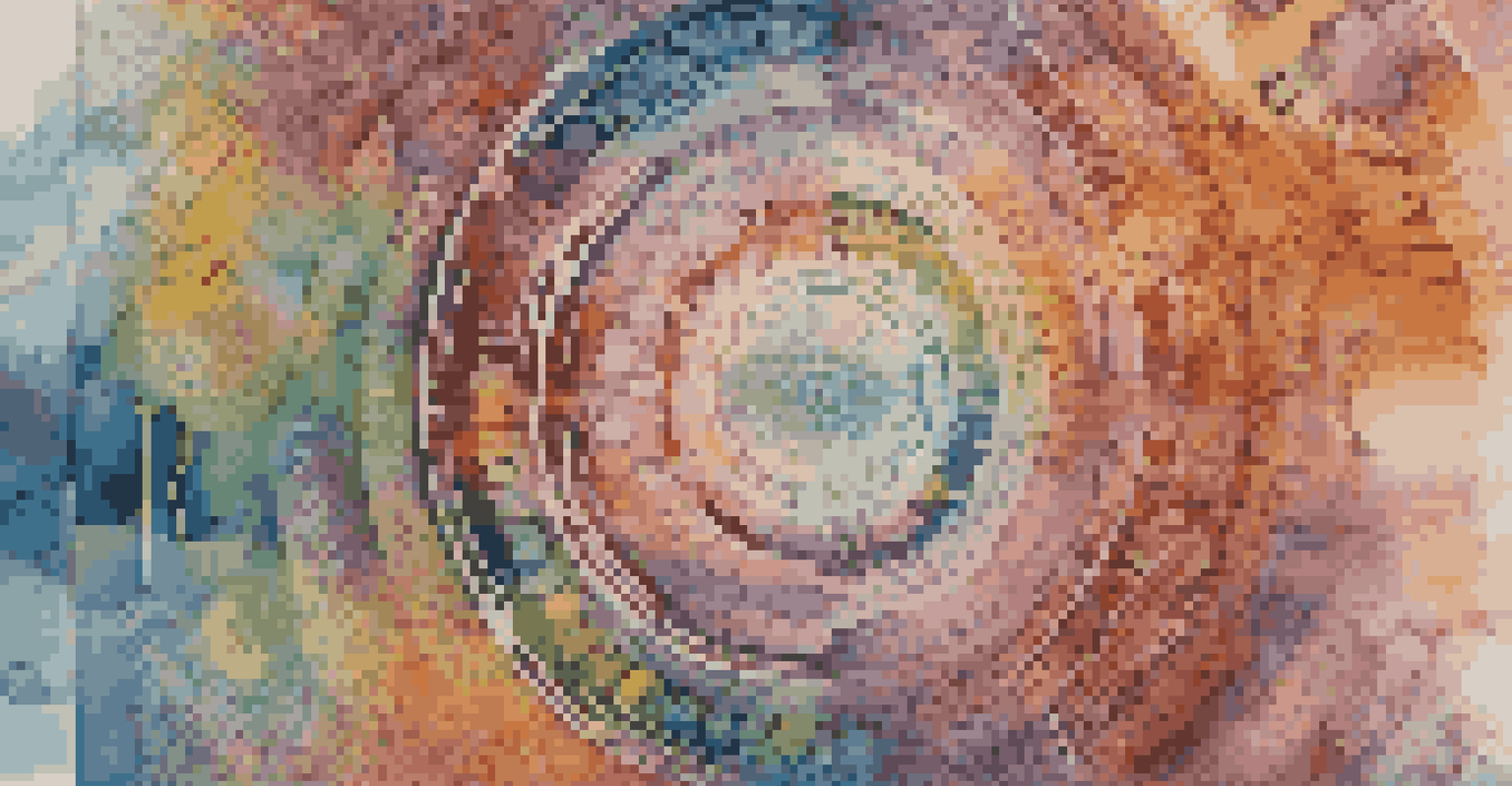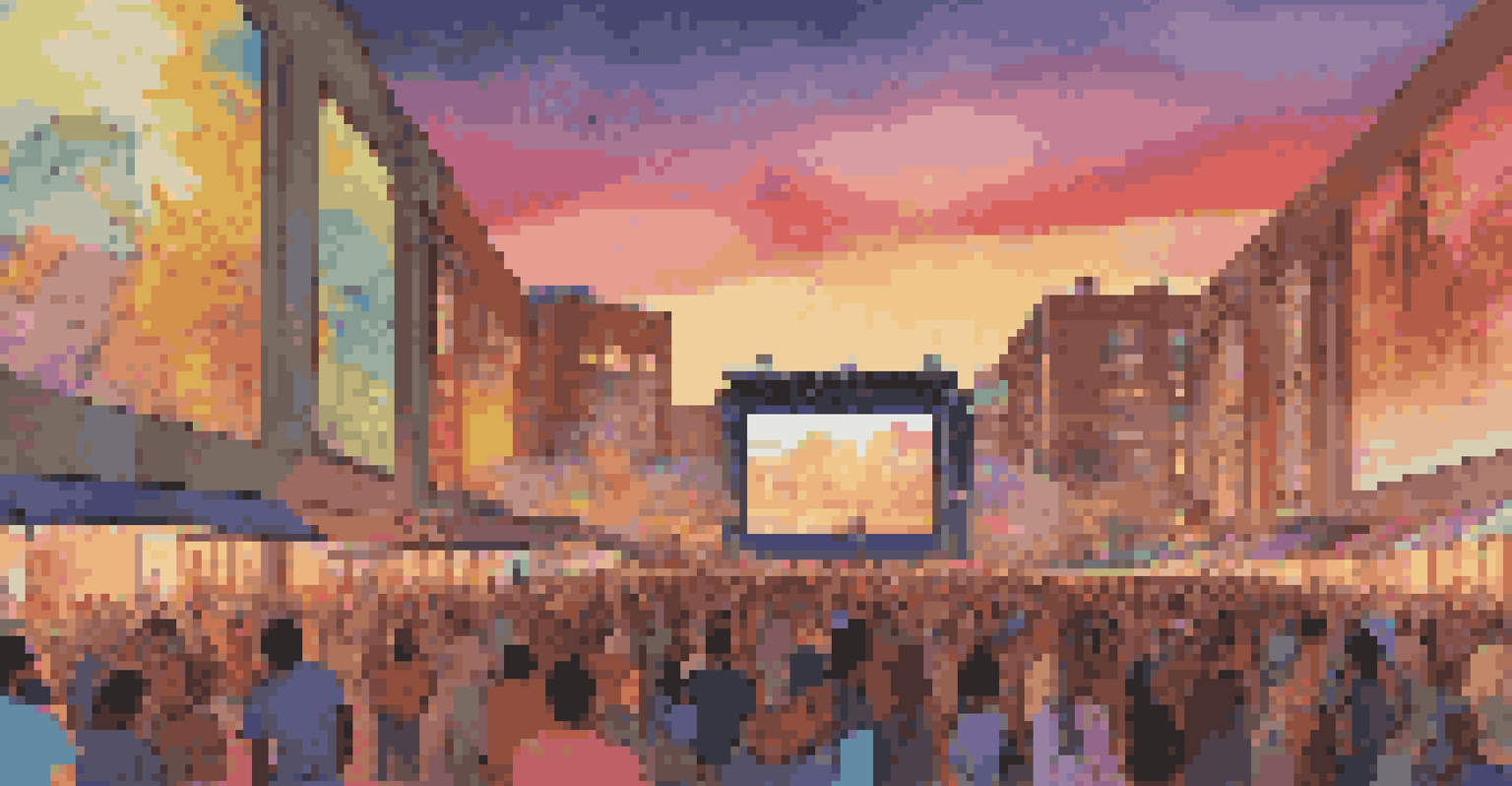Luxury Digital Art and the Future of Gallery Spaces

Understanding Luxury Digital Art: A New Frontier
Luxury digital art represents a fascinating blend of technology and creativity, where art is no longer confined to traditional mediums. As artists embrace digital tools, the definition of luxury is evolving, becoming more inclusive of virtual experiences. This shift not only challenges conventional art forms but also invites a broader audience to appreciate and invest in art in innovative ways.
Art is not what you see, but what you make others see.
In this new landscape, luxury digital art can take many forms, from NFTs (non-fungible tokens) to immersive installations that captivate viewers in ways that traditional art often cannot. For instance, a digital piece might change based on the viewer's mood or time of day, creating a personalized experience that draws people in. This interactive nature is a game-changer, making art feel alive and dynamic.
As the art world embraces these changes, it's essential to recognize how luxury digital art is reshaping collector habits and preferences. Many collectors now seek pieces that not only please the eye but also offer unique experiences, blurring the lines between ownership and engagement. This evolution is just the beginning of a transformative journey for both artists and collectors.
The Role of NFTs in Luxury Digital Art Collecting
NFTs have taken the art world by storm, offering a new way to buy, sell, and own digital art. Each NFT is a unique token on the blockchain that verifies ownership, making it possible to own a piece of digital art just like a physical painting. This innovation has opened doors for artists, allowing them to monetize their work directly without intermediaries.

The allure of NFTs lies not only in ownership but also in the potential for value appreciation. As more collectors recognize the significance of digital art, the demand for NFTs continues to rise, creating an exciting marketplace. For example, digital artists like Beeple have achieved staggering sales, leading many to question the future of traditional art sales.
NFTs Revolutionize Art Ownership
NFTs provide a unique way to own digital art, enabling artists to sell their work directly while ensuring verified ownership through blockchain technology.
However, the NFT landscape is still evolving, and potential buyers must navigate issues such as copyright, authenticity, and market volatility. Understanding these factors is crucial for anyone looking to dive into luxury digital art collecting. As we move forward, the intersection of technology and art will undoubtedly create new opportunities and challenges.
How Digital Art is Transforming Traditional Gallery Spaces
Digital art is redefining how galleries operate, shifting from static displays to immersive experiences. Galleries are now integrating technology, such as virtual reality and interactive installations, to engage visitors in ways that traditional art cannot. For instance, imagine stepping into a gallery where the walls react to your movements, creating a personalized art experience.
The future of art is not just in the artwork itself, but in the experience it creates.
This transformation is about more than just technology; it's about reimagining the role of the gallery itself. As digital art gains popularity, galleries are becoming platforms for dialogue and exploration rather than mere exhibition spaces. They invite visitors to participate in the creation and appreciation of art, fostering a sense of community among artists and audiences.
As we look to the future, it's clear that traditional galleries must adapt to keep pace with these changes. By embracing digital art and the technology that supports it, galleries can attract new audiences and redefine their relevance in the modern art world. This evolution promises to make art more accessible and engaging for everyone.
The Experience Economy: Luxury Digital Art and Engagement
In today's experience-driven economy, luxury digital art offers unique opportunities for engagement. People are not just looking to own art; they crave experiences that resonate with them on a personal level. Digital art allows for interactive elements that can evoke emotions and foster connections, making it a powerful tool for engagement.
For instance, consider a digital art piece that changes based on the viewer's biometric feedback, adapting to their emotional state. Such interactions create a deeper bond between the art and the audience, enhancing the overall experience. This shift towards experience over ownership is reshaping how luxury is defined in the art world.
Digital Art Enhances Gallery Experiences
Digital art is transforming traditional galleries into immersive environments that engage visitors through technology and interactive installations.
Moreover, luxury brands are beginning to collaborate with digital artists to create exclusive experiences that elevate their brand narratives. These partnerships allow brands to connect with consumers in innovative ways, merging art with commerce. As this trend continues, we can expect to see even more creative collaborations that blur the lines between art and lifestyle.
The Globalization of Art: Expanding Digital Access
Digital art has democratized access to art in ways that were previously unimaginable. With just a smartphone or computer, anyone can explore galleries and exhibitions from around the world, breaking down geographical barriers. This accessibility is particularly beneficial for emerging artists, who can now showcase their work to a global audience without the need for a physical gallery.
As a result, we’re witnessing an explosion of diverse voices in the digital art space, enriching the art world with new perspectives and narratives. This globalization not only benefits artists but also enhances the viewer's experience, as they can discover art from different cultures and backgrounds. It's a beautiful reminder that art is a universal language.
However, with this increased access comes the responsibility to navigate cultural sensitivity and authenticity. As audiences engage with global art, it's crucial to appreciate and respect the diverse contexts from which these works emerge. Ultimately, this global exchange of ideas will only strengthen the art community and foster a deeper appreciation for creativity.
Challenges Facing the Luxury Digital Art Market
Despite its rapid growth, the luxury digital art market faces several challenges that could impact its sustainability. Issues such as environmental concerns linked to blockchain technology, market volatility, and questions surrounding copyright and ownership need to be addressed. As the market matures, stakeholders must work collaboratively to find solutions that benefit artists, collectors, and the environment.
Additionally, the perception of digital art as 'less valuable' than traditional art remains a hurdle. Many collectors are still hesitant to invest in digital works, viewing them as fleeting or impermanent. Overcoming this mindset requires education and advocacy, highlighting the unique qualities and experiences that digital art can offer.
Global Access to Diverse Art Forms
Digital art democratizes access, allowing a global audience to explore and appreciate a wider range of artistic expressions from various cultures.
As the art world embraces these challenges, it's important for artists and galleries to advocate for the value of digital art. By engaging in open dialogues about its significance, they can help shift perceptions and create a more inclusive art community. This process will ultimately pave the way for a thriving luxury digital art market.
The Future of Luxury Digital Art and Gallery Spaces
Looking ahead, the future of luxury digital art and gallery spaces is filled with potential and innovation. As technology continues to evolve, we can expect even more immersive experiences that blur the lines between the physical and digital realms. Imagine galleries that incorporate augmented reality, allowing viewers to interact with art in ways we can only dream of today.
Moreover, the growing interest in digital art suggests that traditional galleries will evolve to become hybrid spaces that cater to both physical and digital works. This approach will not only attract new audiences but also create a dynamic environment where different forms of art can coexist and inspire one another. The key will be to maintain a balance between technological innovation and the human experience.

Ultimately, the future of luxury digital art will depend on the willingness of artists, collectors, and galleries to embrace change and adapt to new realities. As we navigate this exciting landscape, one thing is clear: the art world is on the brink of a transformative journey that will redefine how we create, collect, and engage with art.